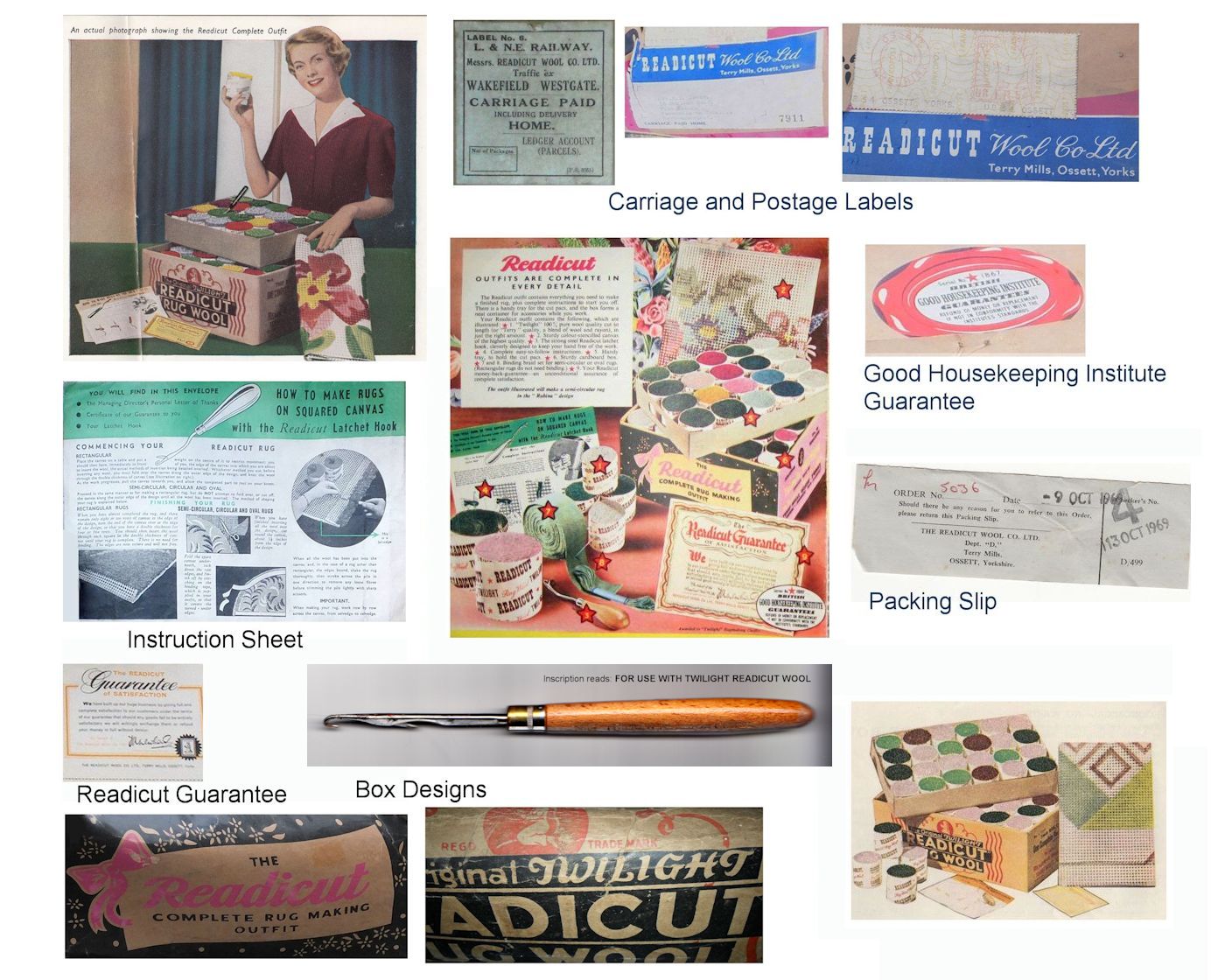
RUG-MAKING SUPPLIES - READICUT (Pt 2)
Readicut took great pride in their rug kits (rug outfits). This extended beyond the quality of canvas, wool and steniclling to the quality of their packaging. The kit depicted is in the Readicut “Twilight” box which meant it was 100% wool and proudly advertising that fact. Later kits were shipped in much plainer boxes, with only the Readicut name and blue dots logo and many contained “Terry” wool/nylon mix rather than “Twilight” pure wool. The red logo printed on the top left hand corner of the Twilight box is a guarantee from the British Good Housekeeping Institute. This promised a refund of money or replacement rug outfit if the contents were not "in conformity with the Institute’s standards." Other labels on the outside are shipping labels. In the 1950s, it was still common to send parcels by rail to be collected by the customer from their local rail station. Later on, parcels were increasingly sent via the post office. “Cash on Delivery” (COD) was also possible. Kits could also be sent – and paid for - in instalments to spread the cost.

Inside the box there was a removable cardboard tray that split the kit into 2 layers. The rug-maker could keep a selection of wool, plus latch hooks and other accessories such as a Canvarex table clamp, in this tray. The rest of the kit: dozens of packs of wool, plus any binding materials could be left in the main box and stored out of the way until needed. That way the house could be kept free of unnecessary clutter. This had been thought out by Readicut in the 1930s. In contrast, at the time of writing this, I have 4 boxes of wool and 3 folded canvases (incomplete secondhand rugs) cluttering my living room plus my “work in progress” on an armchair and some rolls of plain canvases in the back room. I am obviously less house-proud than the sort of customer Readicut had in mind when they designed their two-layer box with its removable tray!
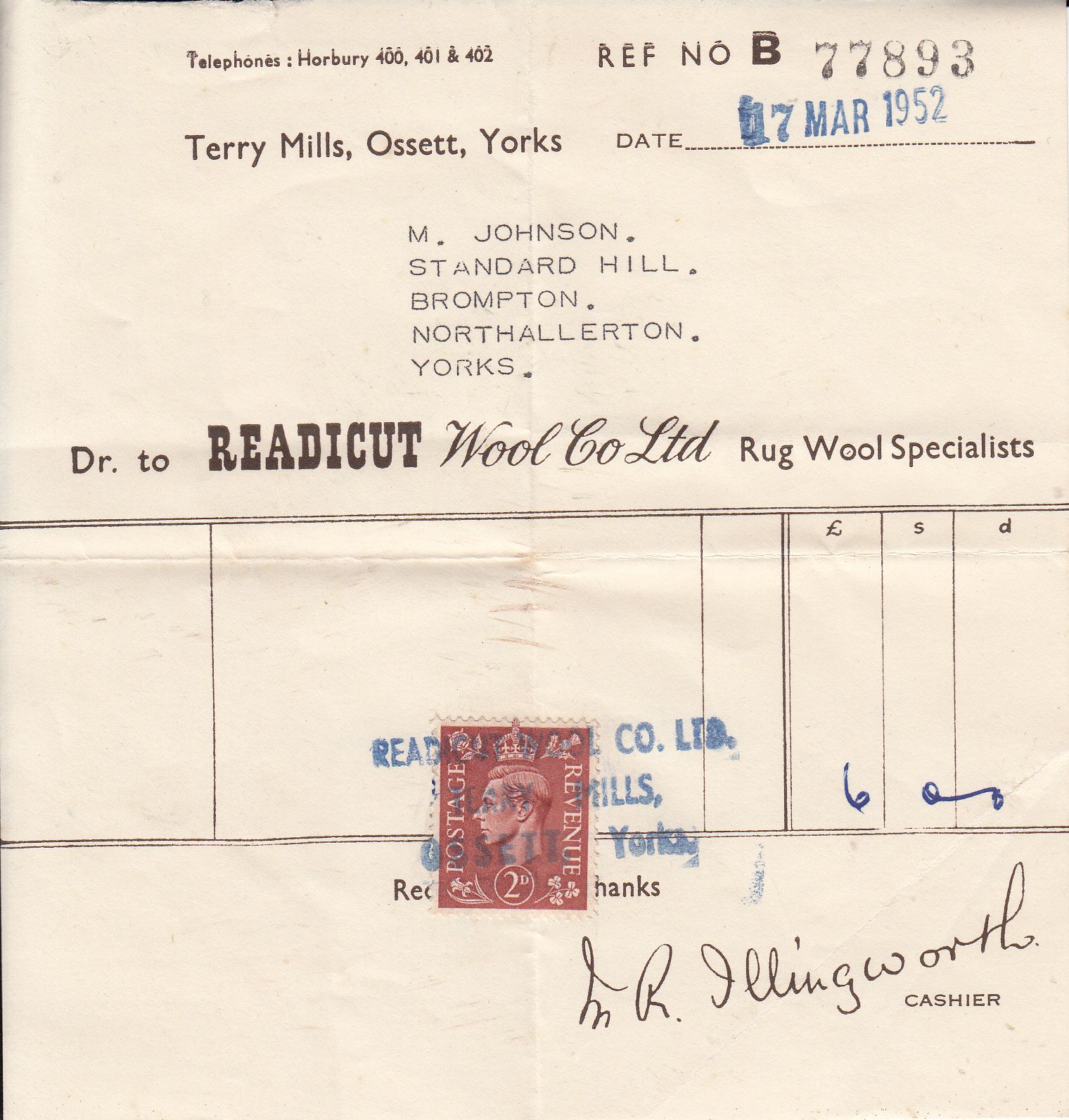
Under the removable tray, inside the main cardboard box, was the stencilled canvas, sufficient packs of wool to make the rug and 2 latch hooks. Two latch hooks were included so that 2 people could work on the rug together (one at each end). Latch hooks tended to proliferate in the homes of avid rug-makers. If the rug was octagonal or had curved edges, the kit included binding tape, flax thread and a needle. The box might also contain extra items ordered by the customer e.g. skeins of whipping wool for the edges of rugs, or a table clamp. Tucked among the wool, there would be the Readicut packing slip with the packing date; this was part of the quality control process and allowed the kit to be traced back to the order should anything be wrong with it. Rug backing was an optional extra and came with its own instructions.
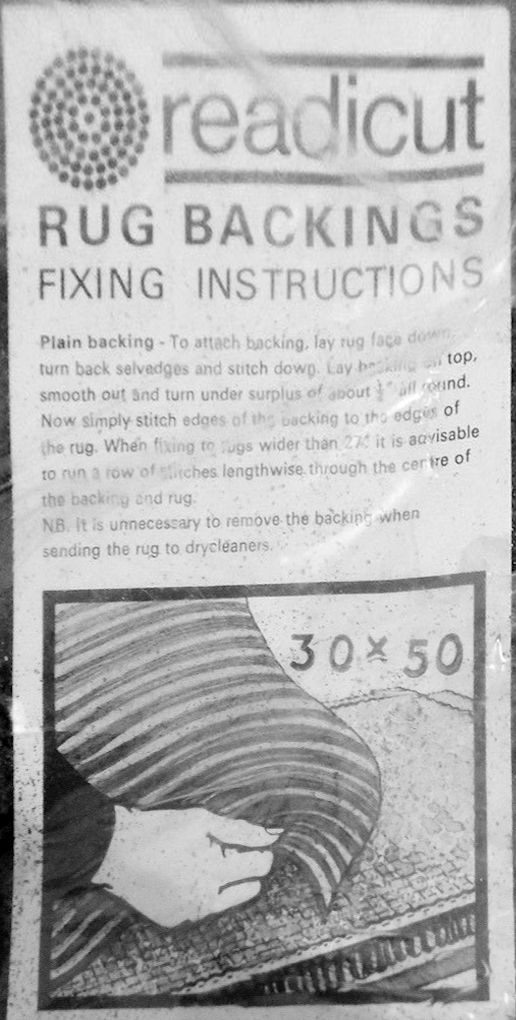
|

|
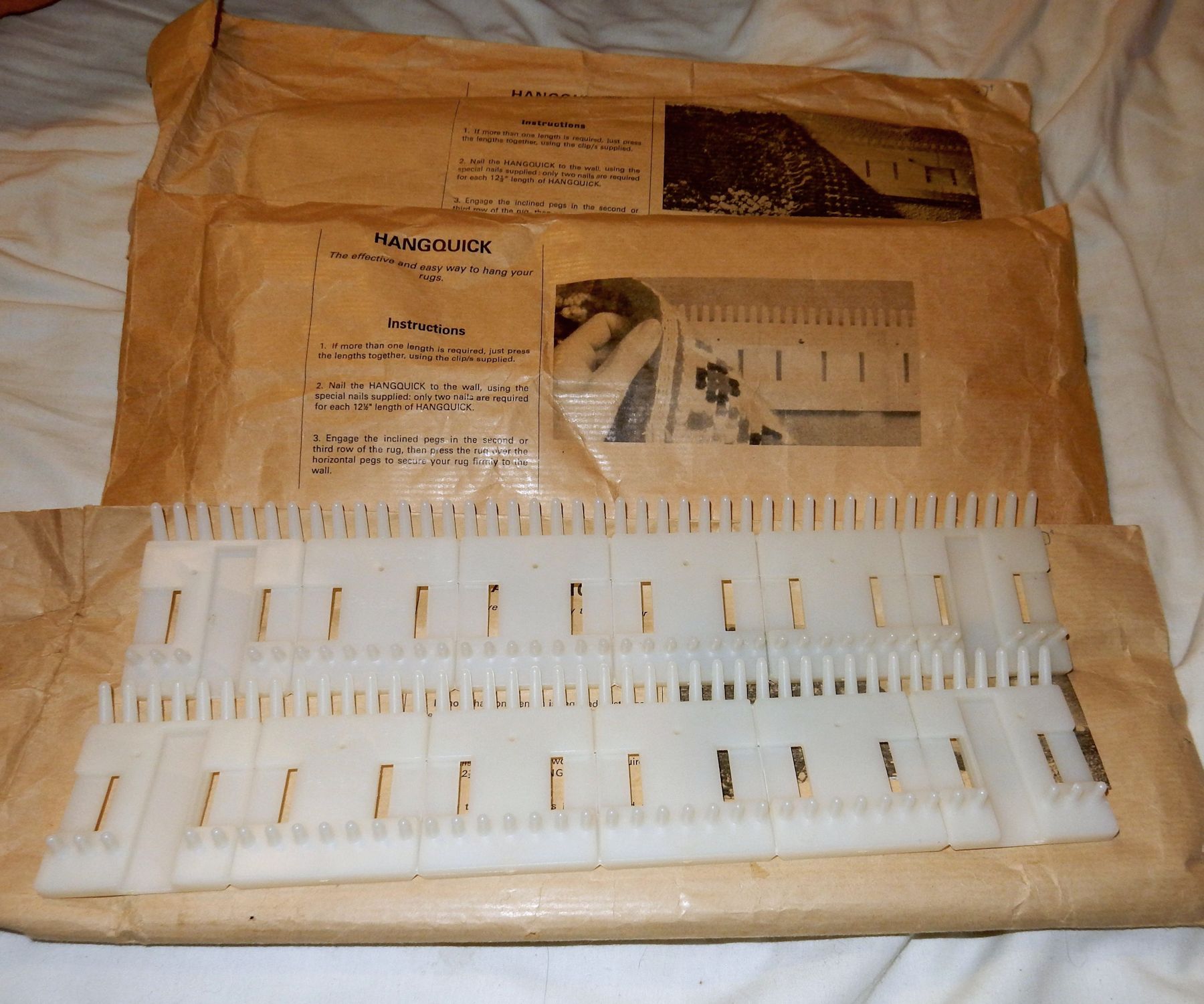
|
|
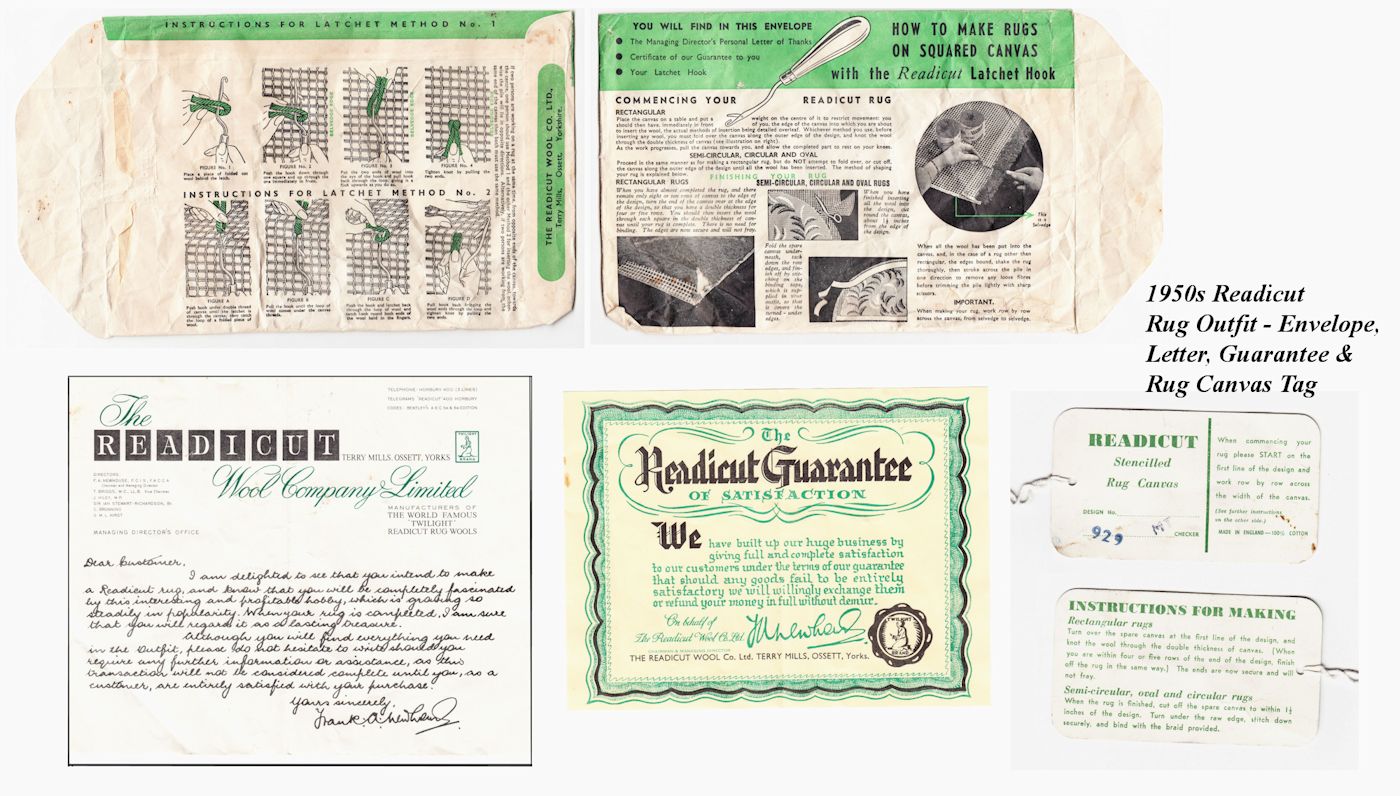
The paperwork came in a large Readicut envelope. Earlier rug outfits contained brown envelopes with a drawing of Ossett Mills, then a white envelope with the instructions printed on it, while the later kits contained a plain white envelope with the blue dots logo. I don’t know if the change to plain packaging was driven by cost or by image. The paperwork included a letter from Readicut thanking the customer for choosing Readicut and promising satisfaction, the Readicut Guarantee (which went multi-lingual in the 1970s), and an “ABC” instructions sheet that included instructions on finishing/binding shaped rugs. There were also envelopes or cards that could request catalogues be sent to friends, an order form and, in earlier kits, a wool sample card. Later kits had a wool colour guide printed in the catalogue. The colour guides allowed customers to order customised kits with alternative colour schemes or to order wool for their own designs. From the late 1950s, there was a chatty 4 page folded sheet from Dorothy Yorke telling the customer about rug-making and how to order from Readicut. This included anonymised customer testimonials. Previously the chat and testimonials had been printed inside the accompanying “Book of Rugs”.
The season’s “Book of Rugs” or mini-catalogue sheet was included. My 1969 kit contained 2 consecutive issues of the Readicut Book of Rugs, while a slightly later kit had only a foldout sheet showing the most popular designs. I’m guessing that that they were the designs being carried over from one season to the next; perhaps this avoided customers receiving a “Book of Rugs” that would expire before they were ready to order their next rug outfit.
Unlike competitors who sold wool in skeins, Readicut didn’t need to supply a cutters or gauges. Some of their competitors included a wooden cutting gauge or Patwin rotary cutter in their pricing structure, offering a discount to customers who didn’t need these.
Moving forward in time, we have this example of uncut Readicut wool! These were available for whipping the selvedges of rugs.
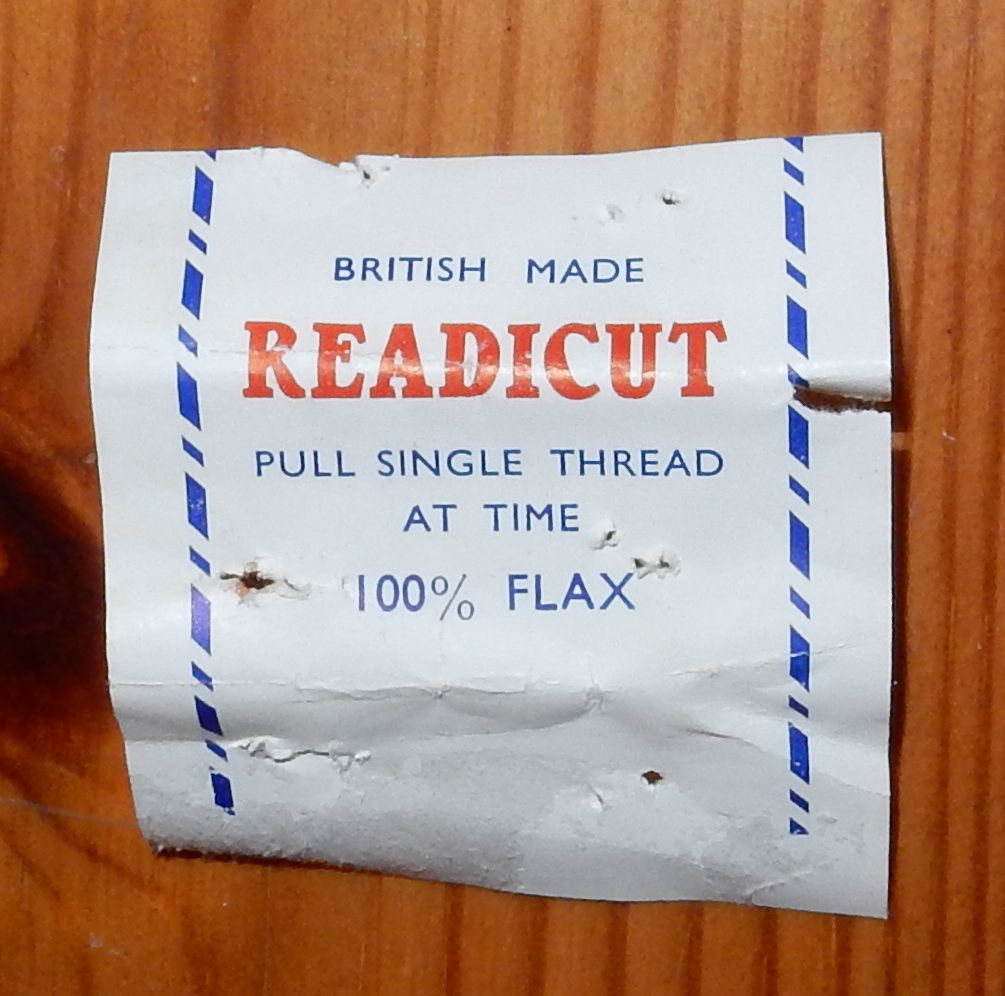
|
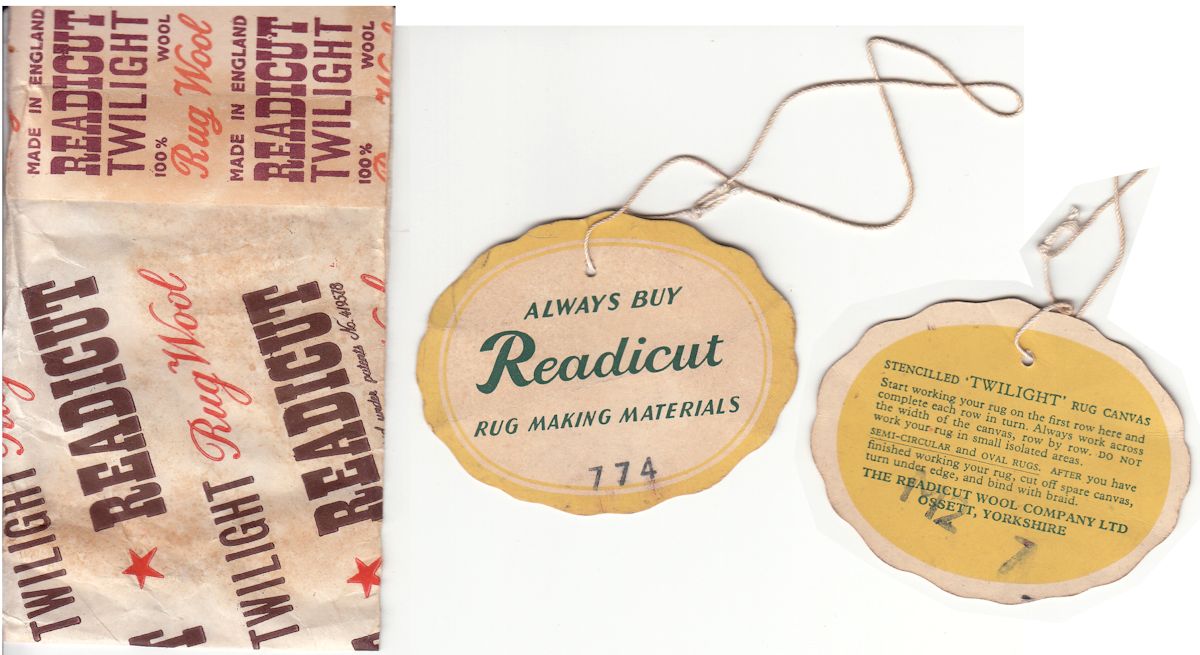
|
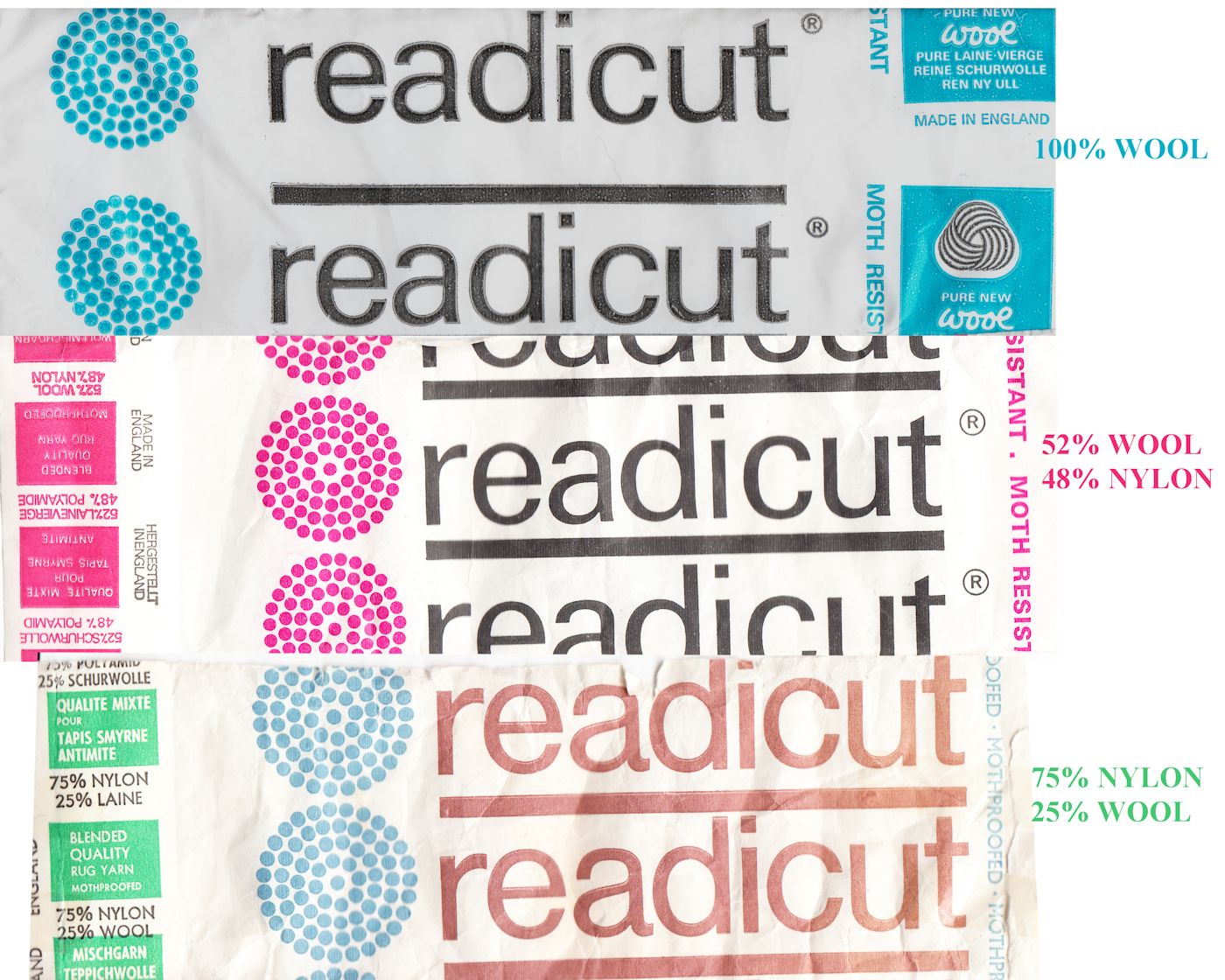
|
|

|
|
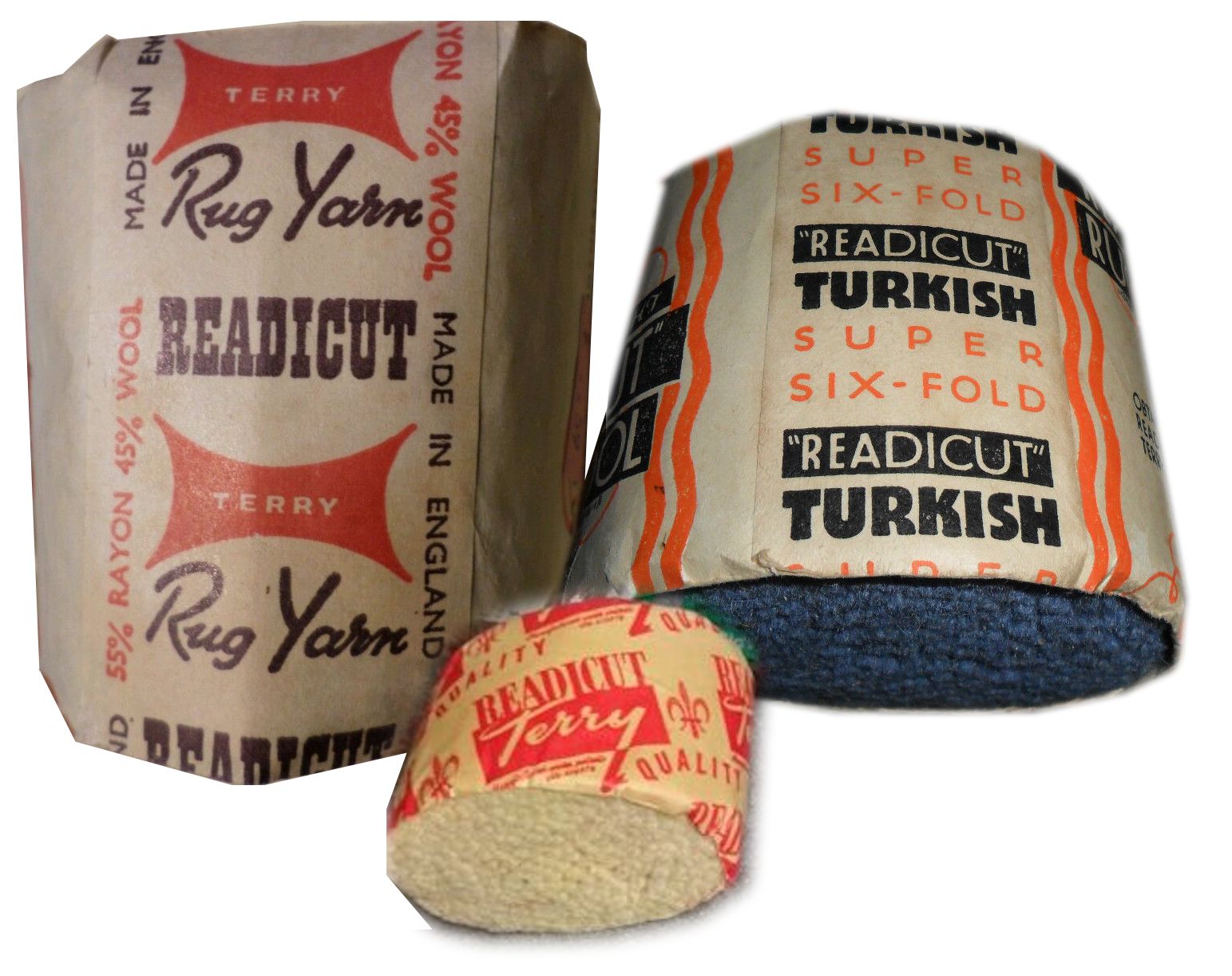
|
|

|
25 YEARS OF CHANGING PAPERWORK
This paperwork comes from 3 rug kits between the mid/late 1950s to early 1970s (the catalogue included with these was Vol 43). This includes an application for credit where the applicant's relationship to the (presumed male) householder had to be stated. Nowadays credit is normally handled by the bank in the form of credit cards rather than by individual companies setting up customer accounts (a nice little bit of social history of how we buy things).
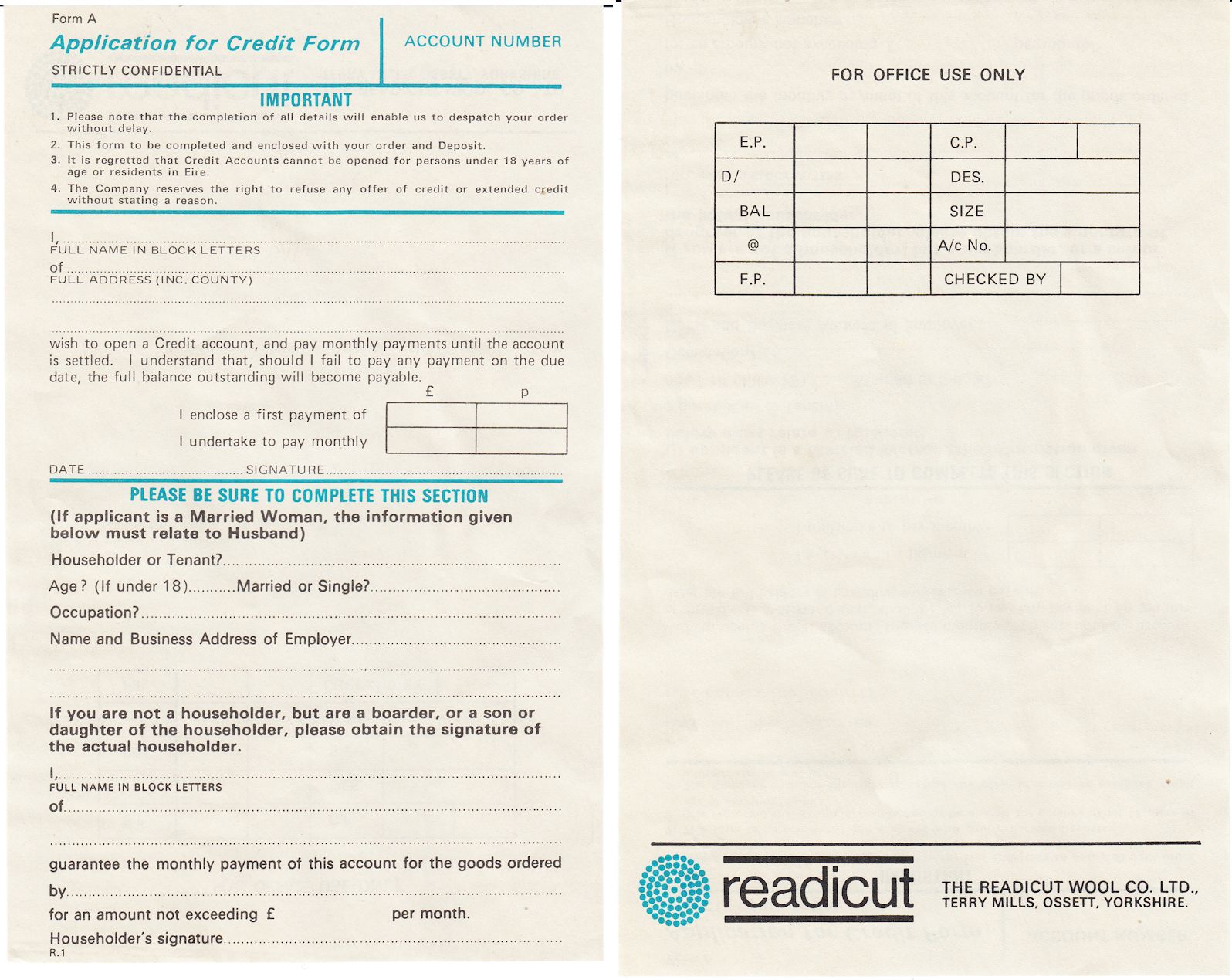

These rug kit inserts show the carpet-making operation acquired by the expanding Readicut company, with price lists. For those on tighter budgets, there was the “Wiltona” range.
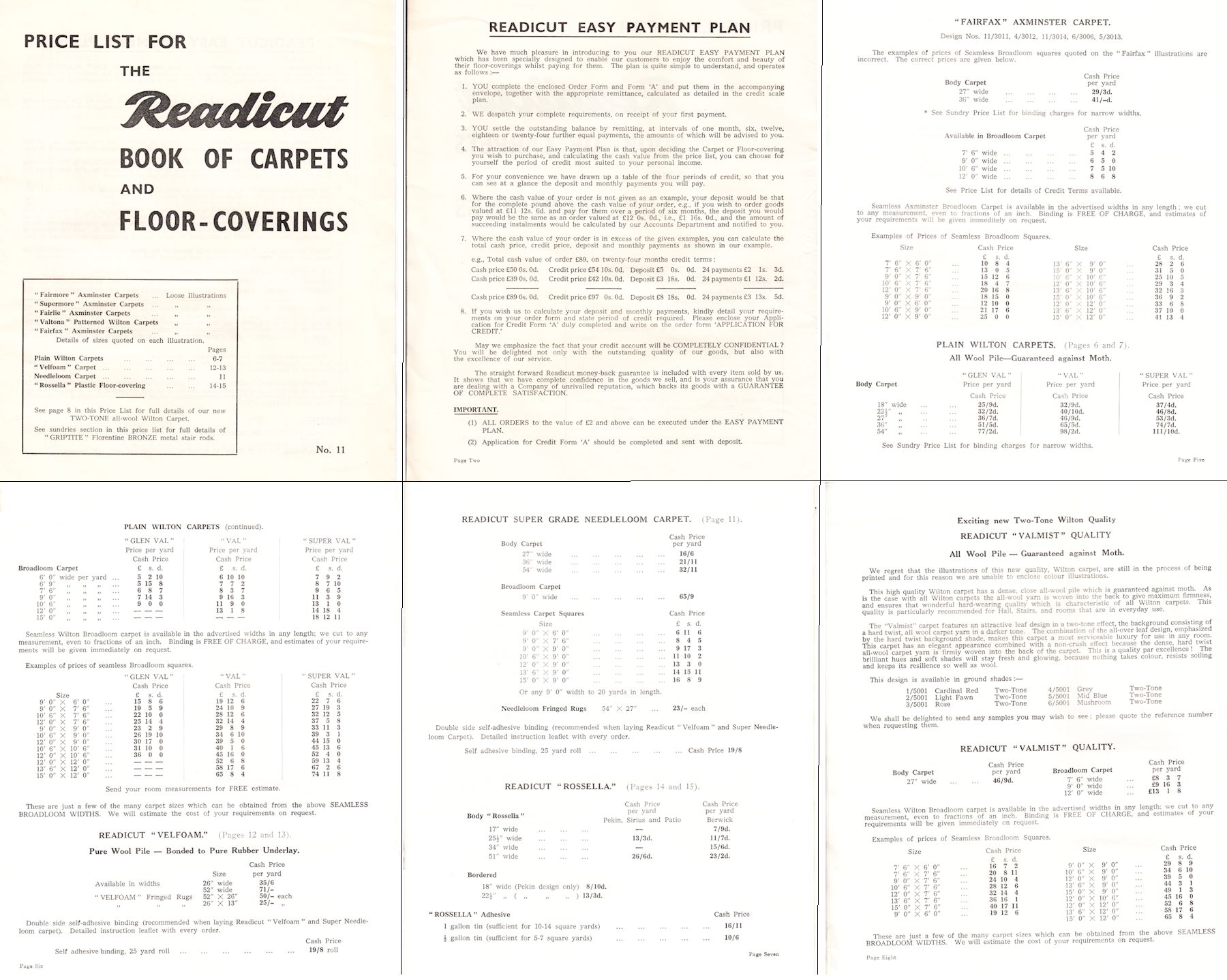
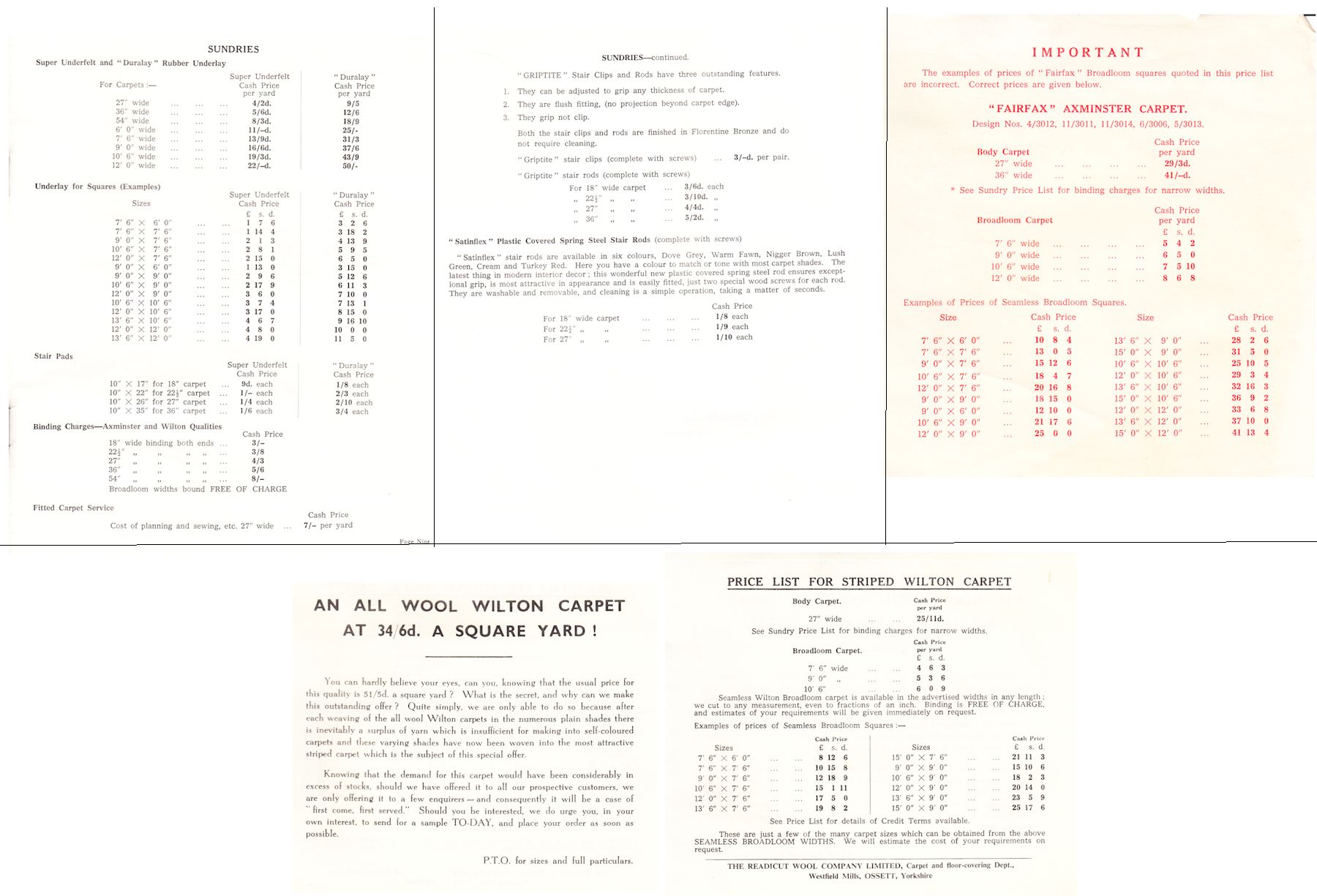
The letters and guarantees reflect changing personnel at the company; some signed by Ralph Hirst and others signed by Frank Newhouse.
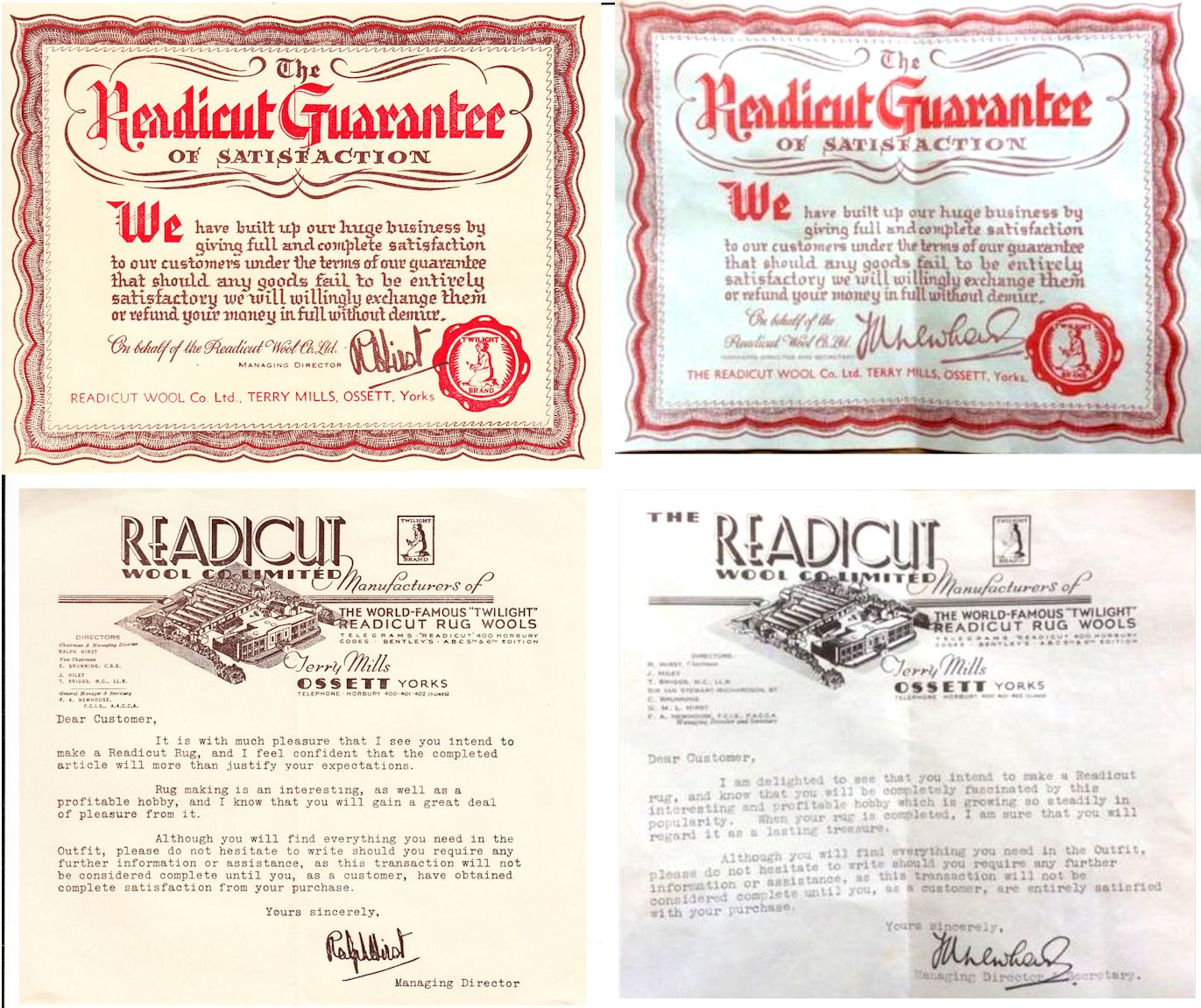
Dorothy Yorke's letter in a 1960s rug kit promoted the new mixed fibre wool.
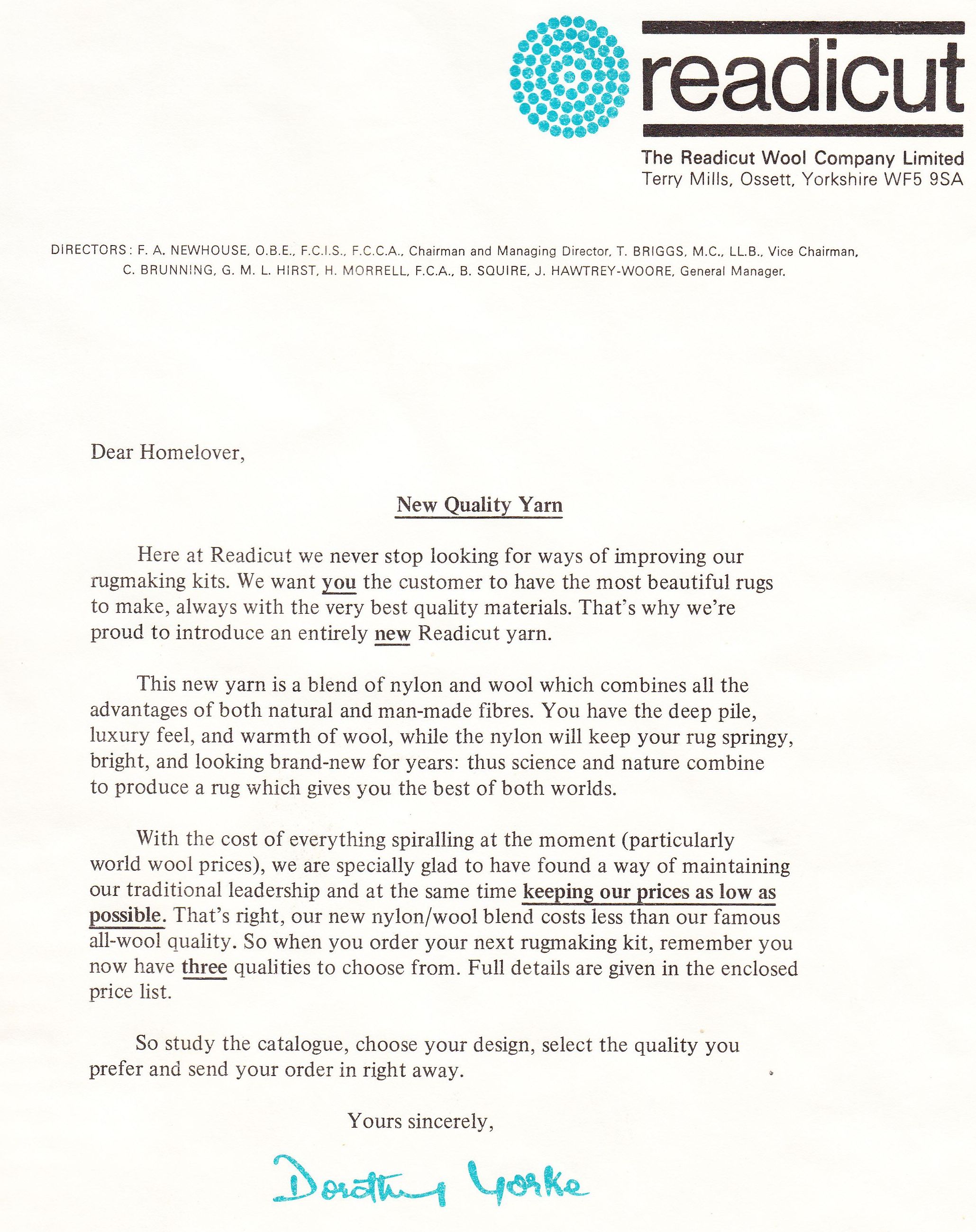
And here are the wool samplers from the 3 kits.
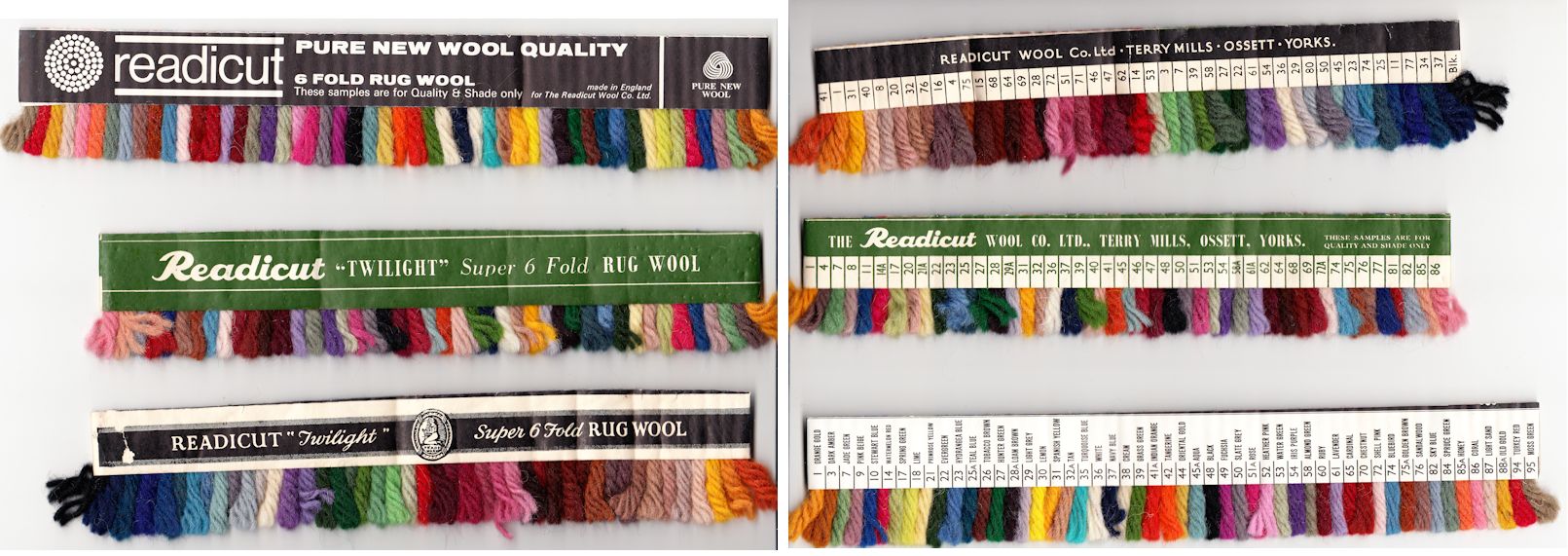
The 1950s kits had brown paper order forms that folded into the integral envelope at the bottom of the form. Later kits had separate order forms and envelopes.
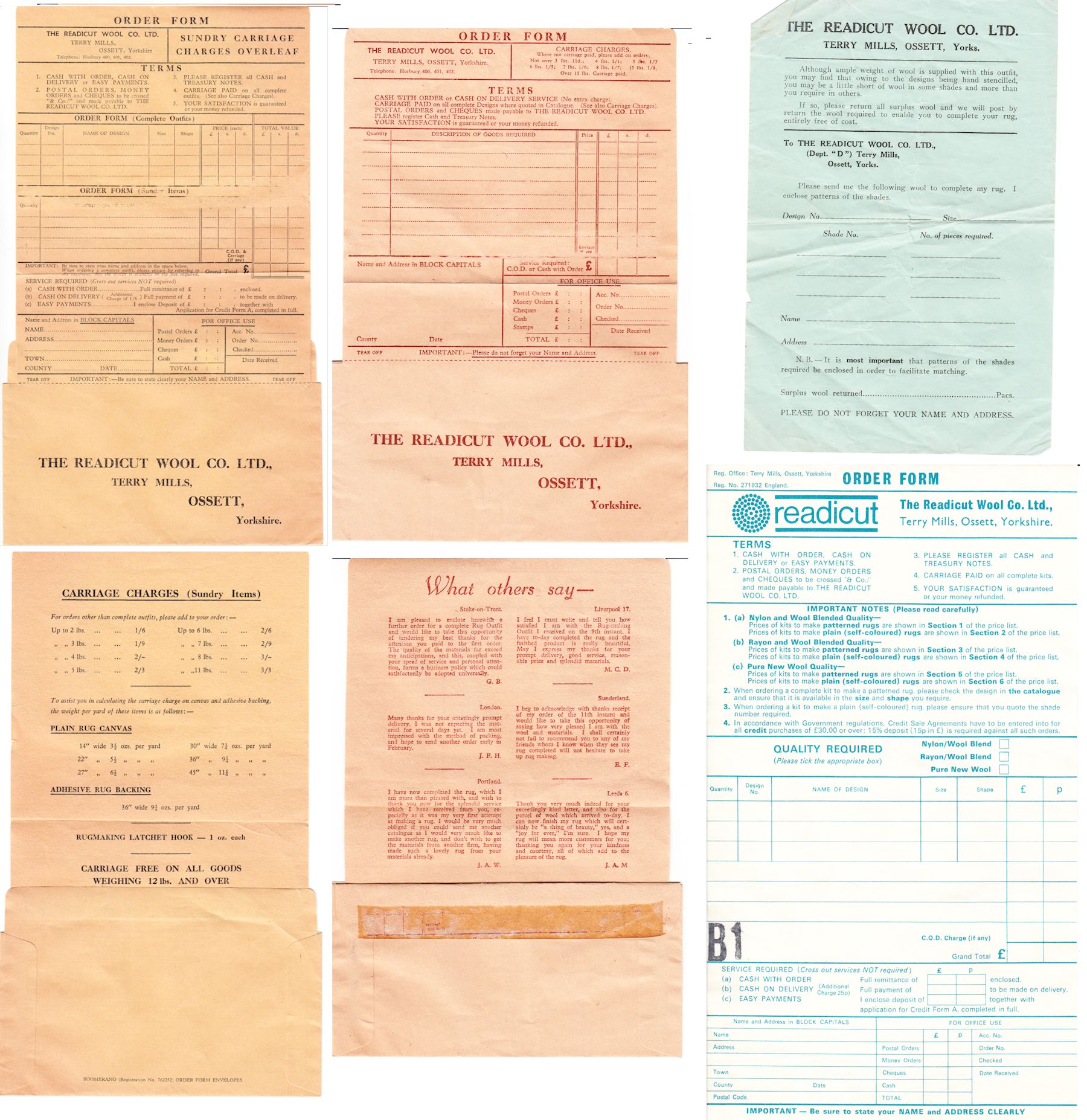
Comparing the 3 kits, the instruction sheets are printed on quite different quality paper/light card, but all 3 kits had instruction sheets with slots at the top where the latch-hook was inserted. The boxed latch-hook appeared later (during the 1970s if memory serves).
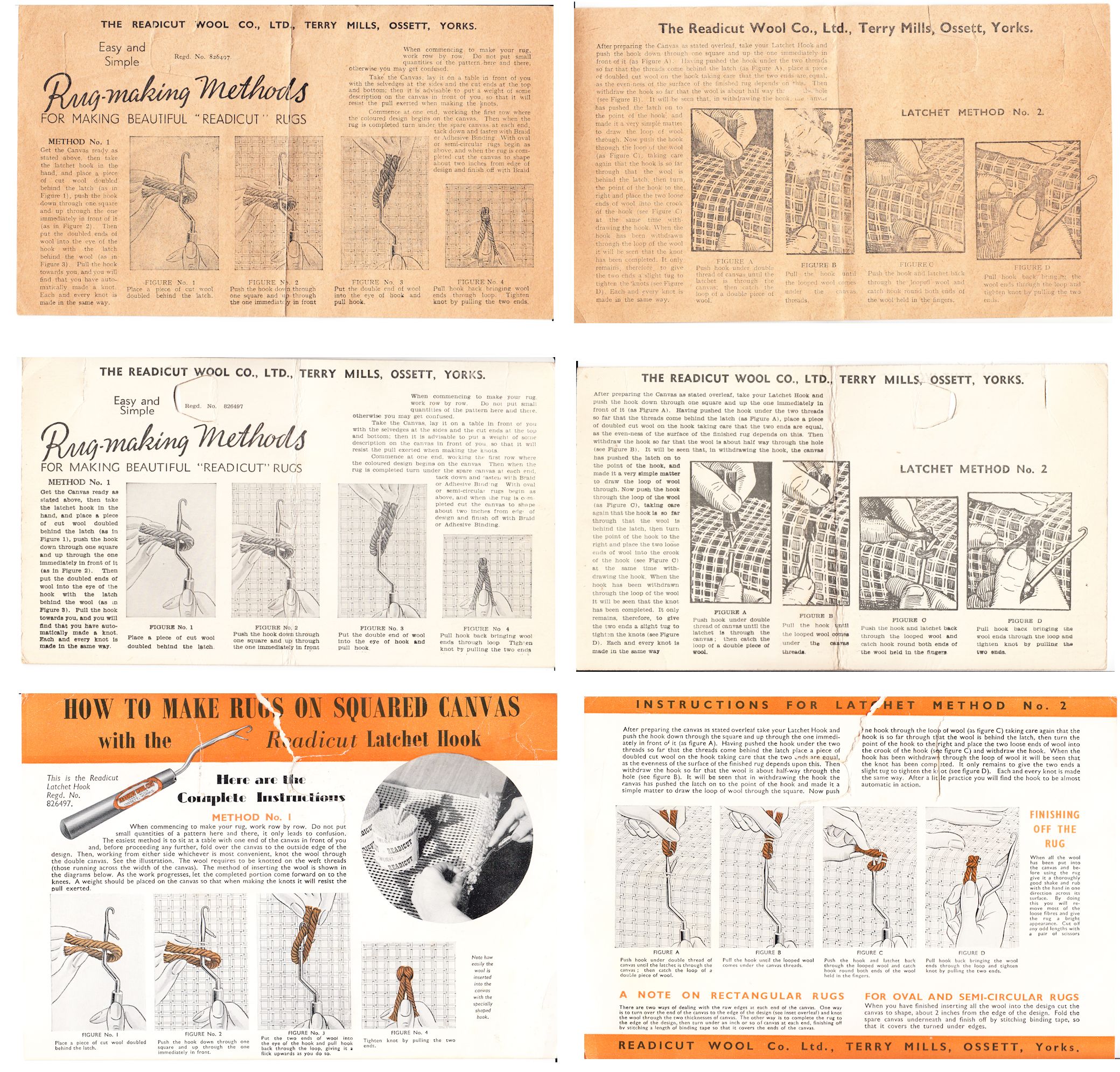
READY-MADES AND EXACTA-GRAPH
From the mid 1970s, the Readicut Book of Rugs advertised these.
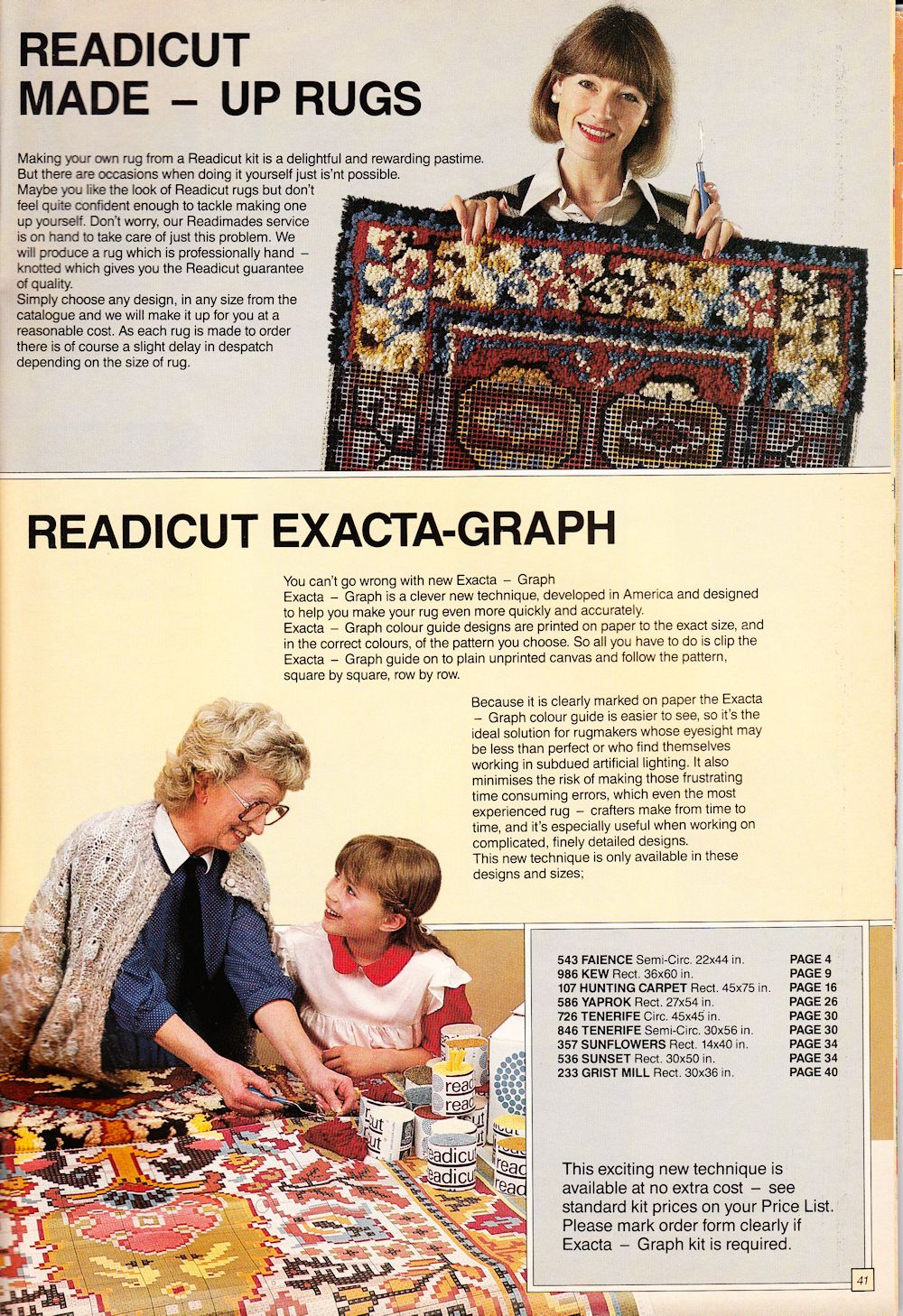
You are visitor number: